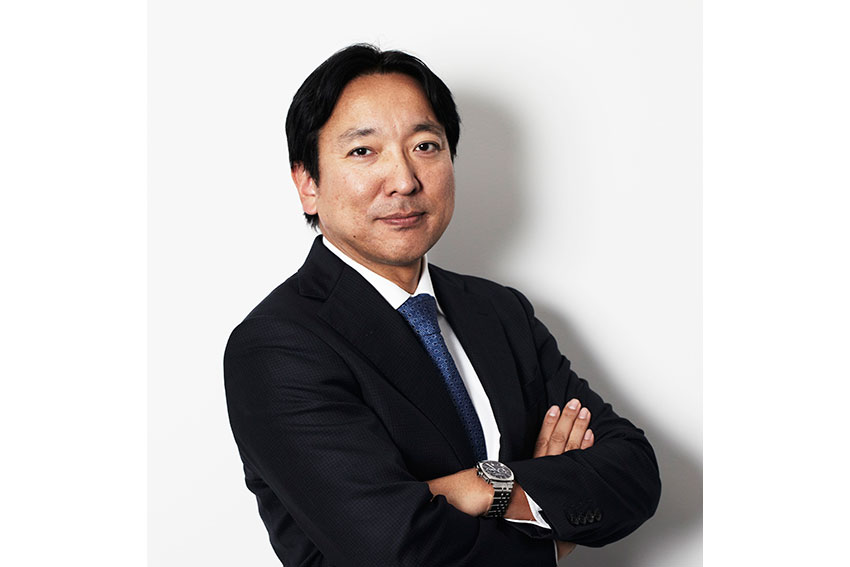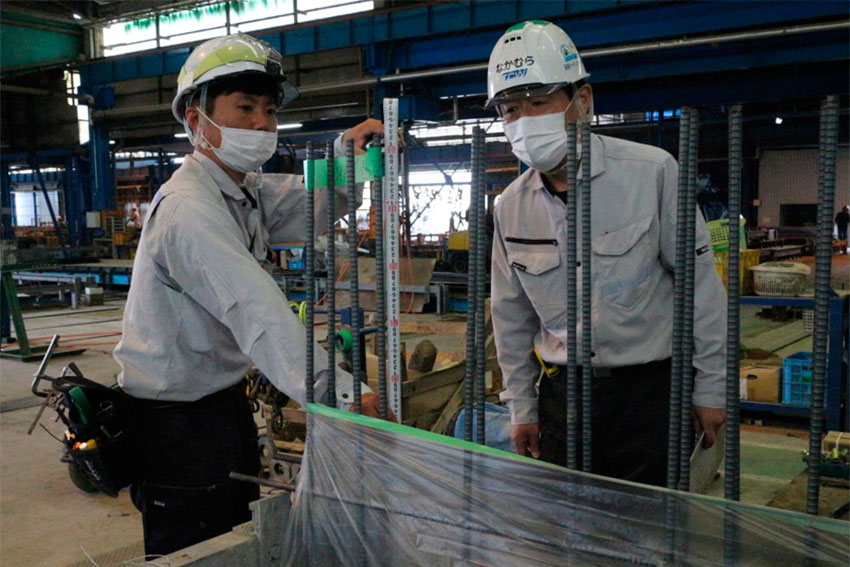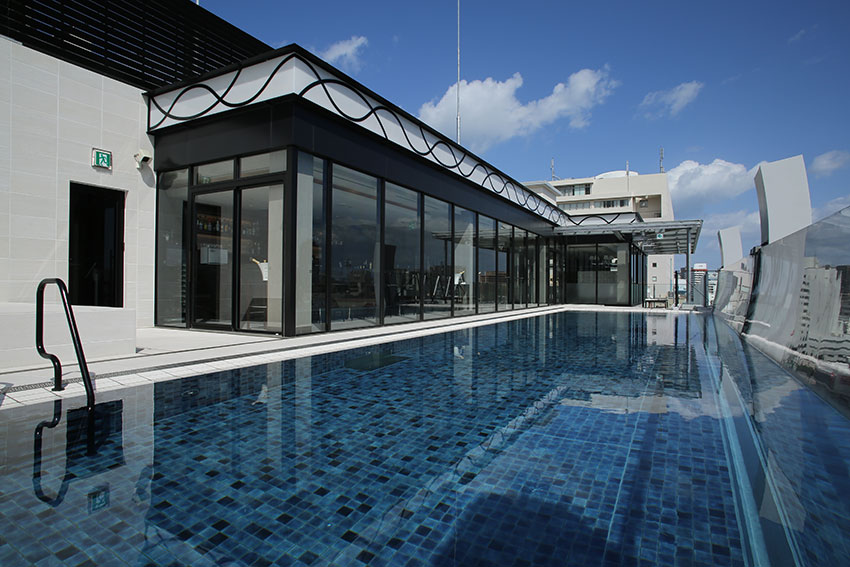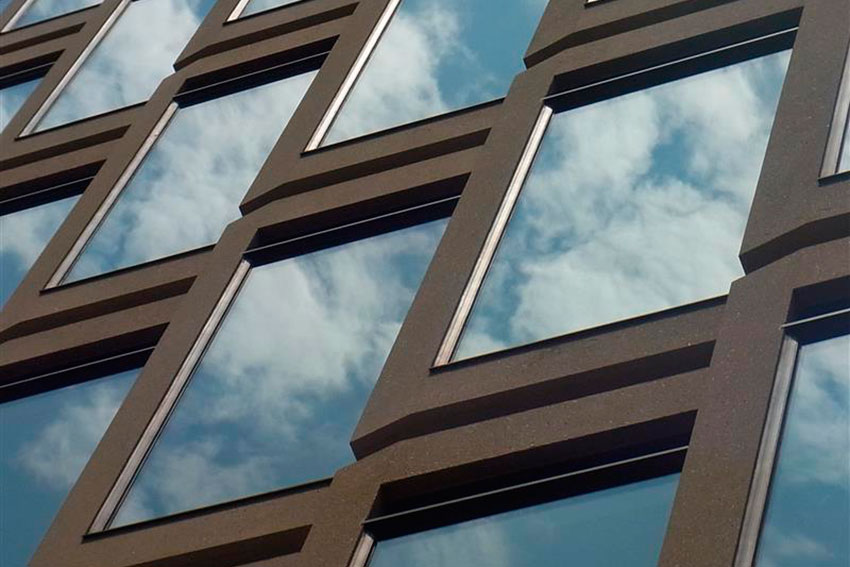Holding the number one position in the Japanese market for precast concrete curtain walls, Takahashi Curtain is now looking to export its technology to earthquake prone regions.

It has been more than 50 years since Japan’s construction boom that we associate with the 1964 Olympics held in Tokyo. Most experts and observers are now calling the market saturated or mature. On one hand, there is a lot of aging infrastructure with a need for ongoing maintenance of existing civil engineering infrastructure and buildings. On the other hand, with Japan’s decreasing demography and aging society, there are far fewer new construction projects. Can you give us your general assessment of the state of the construction sector in Japan and how you expect it to evolve going forward?
I can say that the construction sector has matured. However, major urban areas became old and need to be new including buildings, houses and infrastructure, so it is a necessary industry. Japan is actually going through a sort of lifestyle revolution, so the gap between the older and younger generation is huge, especially in this industry. My company requires concrete, and as you know, concrete was invented by the Romans thousands of years ago. After that, many people have tried to make innovations, but the costs are high. Because of this, very few people are developing and trying to change concrete, but because of the need for CO2 reduction, developments have been made for more eco-friendly concrete solutions. Nowadays, many general contractors have started projects researching ways to reduce CO2 emissions. We feel like we are following in the tailwind of this change with this trend.
Japan has been very ambitious in its goals for carbon neutrality by the year 2050. Within the construction sector, concrete is often pointed to as being a material that has a particularly high carbon footprint. As a business that is centralized around concrete, can you please elaborate on any research initiatives or collaborative research you are conducting? How are you approaching this challenge of making concrete more sustainable?
Many of our clients, general contractors, pick our company up as a research partner. Often they can be a little secretive regarding methods as contractors do not want us to share information with potential competitors. Human resources is a present challenge. Another challenge comes from paperwork. As you may know, in the construction business in Japan, trust is very important and paperwork comes later. Especially when we are involved in project with government support such as NEDO, paperwork becomes huge.
Oftentimes these kinds of investment research projects are very big and very long term. If we do not have enough money, we cannot keep pursuing them. Our company have an equity ratio of 85%, so it means we can afford long term project.
You have mentioned that the generation gap in the construction sector is very pronounced. This is a common issue facing not only construction firms, but all hands-on manufacturing construction companies in Japan. Firms are left figuring out how to deal with the departure of skilled workers due to retirement. Already, one in every four construction workers is 65 or older. How have you approached the challenge of transferring your technical expertise to the next generation?

An expert gives instruction to a young man.
Yes, the generation gap is a big challenge. We are making success in recruiting young people. I guess they, about six people/ a year, are more than 80 percent of young generations coming into our niche industry. They will ensure the strong position of my company in this industry because our competitors just age year by year.
Generally speaking, they prefer working in Tokyo to working in rural area. In order to keep them in our company, we started to allow them skip long term working experience in a factory.
We introduced a software for knowledge management last year. In fact, this morning I had a call about the effectiveness of the system, this knowledge management system, and it is working well. Heads of sections use that software to hand over their knowledge and expertise to the next generation of workers. Last year, we had a lady that was in charge of scanning all the documentation and making sure the material is available and easy to access. If top seniors retires, we may face some big issues as their knowledge goes with them. We make contracts with some seniors and make they can work even they are more than 70 years old.
Is the hiring of foreign workers to supplement the construction workforce part of your approach?
We have three factories in Japan, and many of the workers are non-Japanese. In our head office, we have one Korean and one Chinese native that speaks Japanese very well.
Currently, you hold the number one position in the Japanese market for precast concrete curtain walls. Can you tell us why you believe that is? What are the competitive advantages that set you apart from other such companies in Japan? What is next for Takahashi Curtain Wall Corporation? Are you looking to replicate this success overseas as well?
Let me start talking about the history of my company.
You could say that we are a late entry company and there are bigger companies before us. During the 1980s, companies tended to be loyal to one contractor. For us, because we did not have a strong customer base, we went to every company. This played to our advantage because during the recession of the construction market, fees paid out by contractors got lower and lower. Our competitors had to accept much lower fees for their business. This limited them due to their loyalty to a single client. For us, we had many clients and were able to move around and be flexible. We were able to avoid extremely low price and keep company healthy. Gradually we increased sales power.
We had one employee who was involved in a lot of student protests in the 1960s, Although he could not find a job in big company because of his protest history, he had powerful friends within government and some big companies such as JR Japan. His network enabled us to make some very important connections.
During the first stage of our company, in the 1980s and 1990s, we had good sales power, but the quality of the product was second tier. The resulting recession caused a lot of competitors to shrink or go bankrupt and this was good for us, as it meant talented staffs transferred to our company. Developing our own methods and employing skilled staff members meant we were able to raise the quality of our product. Nowadays, we are providing the best quality in the sector.
When a developer decides to construct a building, often they will go to architect offices to design it. That is great, but where an architect may fall short is in the details. Often details are handled by a subcontractor, and we have a consulting team to help with that. After all the designs are finalized, the developer will choose a general contractor. These contractors are our clients, and often we will submit our drawings so that they will not remove us from the project. The consulting team is very key to the whole process, and we have the best members. Taking a staff member and turning them into a talented consultant takes a lot of time and patience. In this day and age, hiring is very difficult, so we are always on the lookout for young talent.
We are seeing a trend of general contractors going overseas, especially in Southeast Asia, not just for civil infrastructure projects, such as bridges and roads, but also for building and transport projects. Many subcontractors are hitching a ride. Is this an area that you have been involved in or that you have had ambitions to become involved in?
About 10 years ago a big Japanese company tried to introduce our method to Shenyang China with the deputy mayor of Shenyang support. We sent several people to help the project. After the factory was completed, the deputy mayor’s jurisdiction changed. The deputy mayor changed his mind and started questioning the location of the factory, saying “why did you put it in such a stupid place? It should be a factory in my new area.” It was a weird and crazy thing to do, and the factory closed down. I anticipated that, and it is the reason I only sent a few staff and did not invest in the project. Watching this unfold shows how difficult it is to make a factory in China.
Aside from this project we have a joint venture in Dalian. The original purpose was selling precast concrete products in China. We noticed that Chinese people prefer less expensive method, so we gave up. The joint venture became outsourced design office for Japanese market.
Within the CW group, you have the curtain wall business, the aqua business that handles swimming pools, and also the Takahashi Techno, which handles real estate leasing. With real estate, we can see a natural synergy with curtain wall construction, however, swimming pools feel very different. Can you tell us what motivated such diversification and what synergies or advantages the different members of the group create?

AQUA by TCW install all kind of pools including hotel pool.
The swimming pool business came about when a tile company went bankrupt. We hired people working in the company expecting to start a tile business in precast industry. However, the tile business in our industry is very closed, competitors were very strong, and started the pool business instead, which uses tiles.
My father made the initial public offering (IPO) and got a lot of money. He thought that he should do something, so he consulted with many people about potential new businesses. He started Spazio and Takahashi Techno, as well as other businesses. When I was a university student, I saw my father do business with Italian companies and a French company, despite his English not being very good. “Oh great”, I thought as I entered the company and was surprised to see all the subsidiaries in the red. It was before I got my MBA in the US and I really had to think if it was wise to go there. Really, I should have cleaned up these businesses. I graduated in 2003, and in 2004, my father passed away from cancer. My father’s younger brother and I took over the company. I became CEO and told my uncle we should stop these businesses. He was very reluctant to give up on them. For my uncle and father, giving up businesses was a real shame. It took 10 years to grow all the businesses back. Aqua is the only remain.
After closing subsidiaries, the number of meetings decreased, most of my worries disappeared and profit increase a lot. We enjoyed this good condition about ten years and our financial status became very strong. Now we are ready to challenge new things.
You have mentioned your strong equity ratio of 85%, which allows you to reinvest in technical development and have some creative license. Can you tell us more about the current focus of that research and development strategy? How are you using this equity to improve your company and services?
When you look at CO2 reduction, it is a subject that Japanese companies are taking seriously. I think there are a lot of good business opportunities. I have hired people to research, and we will have a new plant that enable us to produce more variety of concrete colors, textures and CO2 reduction features. Our new people and plant will make us stronger in the market.
Have you considered overseas partners?
Honestly, yes. I would like that, however, nobody has called yet. We are trying to produce new products that reduce our CO2 footprint and trying to get a patent. Once we receive the patent, I want to take the know-how and sell it overseas. The patent is pending and we are hopeful we will receive it this year. Unfortunately, a patent is just a patent. We still need to conduct more trials and reduce the cost to make it more realistic for use.
A big part of Joe Biden’s infrastructure bill that is often overlooked relates to making infrastructure in the US more resistant to natural disasters. There has been a rush from Japanese companies to bring their anti-disaster technologies to the US as a result. How do you think Japan can help other advanced nations in repairing and preparing their infrastructure for natural disasters?
Of course, Japan has suffered countless earthquakes, and we have the technology to resist them. I think California also suffers from earthquakes, as well as Turkey and China. It is good to export our technology to these vulnerable places.
Throughout your company's history, you have been a part of many spectacular projects, especially from the perspective of foreigners living in Japan - the Sky Tree is one that comes to mind. Do you have a favorite? Do you have a project that you have worked on that you take the most pride in or you think represents the capability of your company?

The Yodoyabashi Tokyo Marine Nichido Building.
As you know, each building has different faces. I have many buildings that I’m interested in. The Yodoyabashi Tokyo Marine Nichido Building in Osaka is a very good building, I think. Another is the Tokyo Metropolitan Government Building. Now that I think about it, there are so many and too many to mention.
What is your midterm strategy to continue this corporate growth of your company?
Focusing on finding CO2 reduction technology. Currently, we have about five to six of these development projects running. I hope at least one of them makes money for us.
Imagine we come back four years from now and conduct this interview again. What are your goals and dreams for the next four years?
In four years, I want to do something new. It might be started selling new CO2 reduction product, buying competitors in Japan or taking partnership with the U.S company. Anything can fine. I want to change my company.
0 COMMENTS